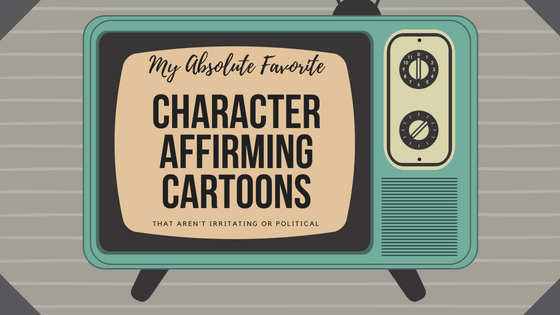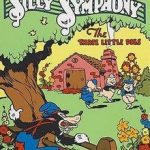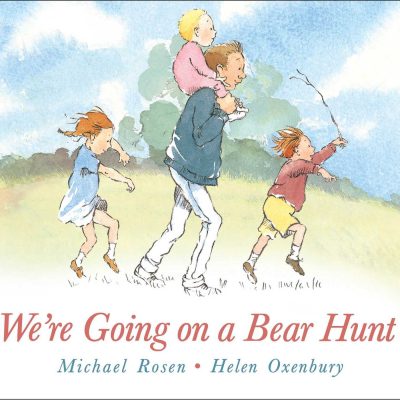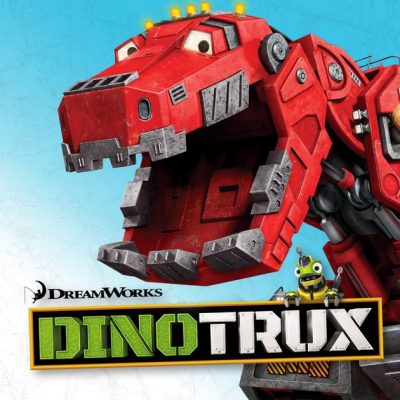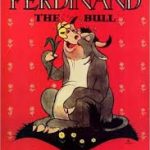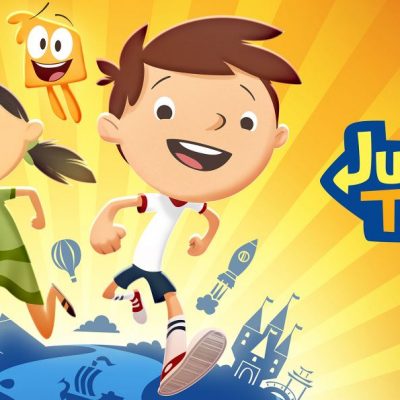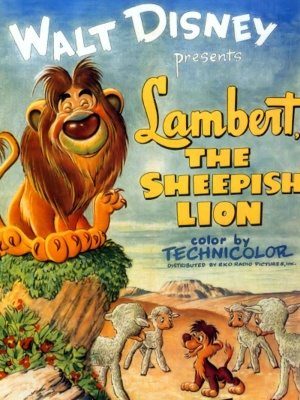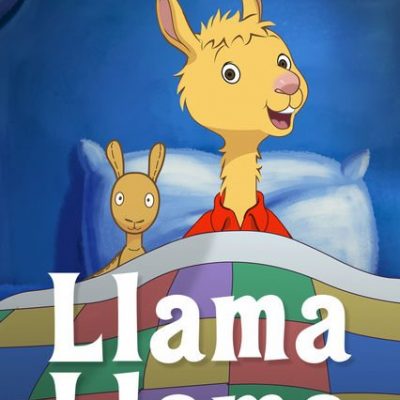A few months ago, my oldest son was obsessed with the Netflix series, “Spirit”. It’s about a city girl who moves to the 19-century wild west and has everyday adventures with her beloved horse. It’s targeted towards pre-teen girls but my 5-year old son loves the horses and fast-paced adventures. The show seemed harmless and I honestly really love the opening song. (It’s sung by the crazy talented Maisey Stella from ABCs Nashville television series. She’s so young but her voice is incredible.)
One day I sat down and watched an episode with him while folding laundry. I was quickly appalled. The episode revolved around the main character, 12-year old Lucky, finding a horse she believed to be abused. She sneaks out of her home, breaks into another person’s home, STEALS THE HORSE and eventually confronts and reprimands an adult. She is rude, self-righteous and a brat. In another episode, she ignores her father’s explicit instructions, travels where she’s forbidden and ultimately endangers the lives of her friends. This direct defiance is portrayed as merely a “mistake”. The entire show consistently reinforces the notion children can (and should) be disrespectful and condescending to an adult if they decide there is injustice.
I asked my son what he thought about her actions and without hesitation he repeated the mantra that’s engrained in almost EVERY modern cartoon, “She followed her heart.”
Bingo. Following your heart is the ultimate goal in almost every popular children’s cartoon.
NOT SO HIDDEN MESSAGES
A majority of modern cartoons have political or social justice themes woven into the storyline. Regardless of your political affiliation, you can’t deny that children’s cartoons are being used to send messages to young audiences. That’s not what upsets me. Some of those issues are important and powerful. Political and cultural messages have always been interwoven into cartoons and fairy tales. In fact, literary fairy tales have historically been a social gage on culture and current politics. Fairy tales, cinema and now children animation is a direct reflection on our cultural values and current political climate.
But you know what’s NOT addressed anymore?
Character, moral integrity and ethical boundaries.
The last few generations have stopped inserting moral messages into children’s animation. It’s understandable since we’ve collectively decided morality is “relative”. We certainly can’t insert ethical or moral guidelines into children’s stories if we can’t even define morality anymore. Who’s to decide what’s “right” and “wrong”. We’ve replaced the morality message with social and educational issues.
Teaching recycling, women’s rights, climate change etc to our children is simply more important than moral and character development. It’s not just “out of balance”. Moral and ethical messages in modern cartoons simply aren’t included.
Am I wrong? I don’t think so.
SOMETHING IS MISSING
Historically, classic cartoons and fairy tales often had deeper meaning and influential messages. Modern cartoons are shallow and focus almost exclusively on the child’s worth, perfection and the child’s personal desires. For example, Ariel in Disney’s the Little Mermaid is a rebellious, selfish teenager that is eventually rescued from her disastrous decision. However, the original story by Hans Christian Anderson includes very painful consequences for her actions.
Again, conveying both political and moral messages through literary or narrative form has existed throughout history. Folklore stories used to be graphically clear with stories to scare children into compliance. For example, the original Three Little Pig story started off with the Momma Pig kicking her precious children out because they were lazy. She told them to make their own way and get the heck out of her home. Little Red Riding Hood didn’t follow instructions and she was literally eaten alive by a wolf. That’s a powerfully motivating message.
This is a Battle.
Parents. There’s no easy way around this issue. There’s no short cut. I know you’re exhausted but
You. Must. Pay. Attention.
You must actively watch, screen and be discerning. You should not assume the cartoon or entertainment is appropriate. You should assume otherwise and treat this as a raging battle. For a sickening example, the recently released “Show Dogs” (2018) movie is rated PG and has a disturbing scene where a playful and funny character has his genitals touched. The character is encouraged to get used to it and find a “zen place”. It’s supposedly the funniest scene of the movie. Hilarious.

Modern cartoons are flashy, beautifully animated but completely devoid of moral substance.
Older cartoons are slower paced, have terribly animation but typically have integrity and ethical messages interwoven.
I’m not implying wisdom can’t be found in modern animation. And granted, some older cartoons have harmful messages as well. I’m asking you to be careful and aware of what messages are being funneled into your baby’s minds.
So what are my favorites?
Favorite Classic Cartoons
- Lambert the Sheepish Lion: This was by far my favorite cartoon growing up. I can still sing the entire song….loud and proud. The overall lesson is to use your strength and size to protect others! Underlining themes are courage, bravery and befriending those who are different.
- We’re Going on a Bear Hunt: This cartoon was adapted from the 1997 book by the same name. It’s a beautifully told British story that delicately discusses death and conquering obstacles. The music and art is absolutely entrancing. It’s also very fun to act out the story with young children. Sometimes I hide teddy bears and my boys and I will “hunt” for them following the storyline and the landscape obstacles.
- Three Little Pigs: This is one of my favorite cartoons to discuss with my boys. The overall message is: Don’t be lazy jerks. It’s important to work hard now so you aren’t destroyed. It’s important to me to raise hardworking children. It’s especially important to me to raise hard working men since they are rare commodities.
- Tortoise & The Hare: There are literally hundreds of versions of this classic Aesop’s Fable. Some of the versions are morbid and have pro-capitalist messages. I personally like Disney’s 1934 version. The hare is arrogant with a horribly irritating laugh. The tortoise is lovable and kind. The message is obvious: Slow and steady wins the race. Perseverance and focus wins over arrogance and pride. My son said, “I can’t believe he doesn’t win, Momma! He really should have.” He gets it and we had a great conversation.
- Andy Griffith Show: I know this isn’t a cartoon but it’s jammed with character and moral reinforcement. Young kids won’t like it at first. Or at least mine didn’t. But I have the most incredible conversation with my 5 year-old these episodes. Particularly after the episode where Opie meets a bully and another when Opie tries to throw a tantrum to get a new bike. (Warning: The bully episode might be terribly uncomfortable for helicopter parents. It’s shows what it’s like to really let your child learn hard and painful lessons.)
Favorite Modern Cartoons: My criteria for modern cartoons was three fold:
- Does the cartoon reinforce positive character traits? Does it have any consistent moral messages?
- Not irritating or creepy. Pretty straight forward and obviously Caillou or The Wiggles didn’t make the cut.
- Is the cartoon outward or externally focused? By that I mean – what can the character learn or offer in return to others? Or is the entire premise about how the character is basically perfect by “following their heart”.
I often let my kids watch cartoons that aren’t my “favorite” (like Paw Patrol, Thomas the Train). I will just push and suggest my favorites.
- Justin Time: Justin and his imaginary friends travel all over the world experiencing new cultures while learning valuable lessons like following instructions, listening better, the value of being patient, being a good friend and persevering. The sidekick “Squidgy” is really quite funny.
- Llama Llama: It’s based on the beloved book series and Momma Llama is voiced by Jennifer Garner. Most of Llama Llama’s friends work together on projects and there’s a consistent theme of perseverance and team work. There’s also a great episode called “Llama Llama Learning to Read” where reading out loud is encouraged. It’s a good episode since many young kids are scared to read out loud.
- Stinky & Dirty: This might not appeal to little girls but my boys love this cartoon. They love the trucks, loud noises and heavy machinery. I love each episode focuses on asking the question, “what if”. It revolves around problem solving and working through obstacles.
- DinoTrux: This is my husband’s favorite cartoon. It’s very imaginative and the animation is impressive. The characters are hybrid creatures part dinosaur and part machine. This series also pushes problem solving skills and focuses on mathematical and engineering obstacles.





